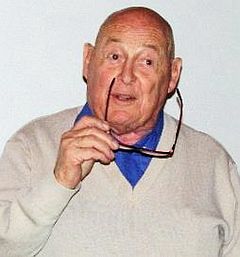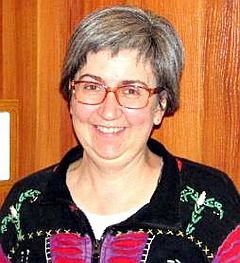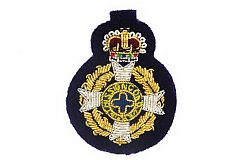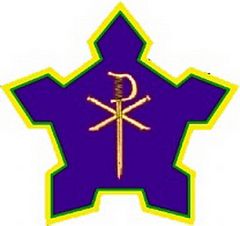


Curtain Raiser: “Kearsarge vs. Alabama” by Colin Harris
Colin Harris held an interesting Curtain Raiser lecture which had an American Civil War nautical flavour involving the battle of two American Steam Sloops in French waters. The CSS Alabama hailed from the Confederate States naval force, and the USS Kearsarge from the United States naval force.

Colin Harris
The Captain of the CSS Alabama decided to leave the international waters of the neutral Cherbourg harbour in France on 19 June 1864, rather than stay and surrender to the French, with his crew having to seek Asylum. Captain Raphael Semmes set sail, but outside the harbour, the USS Sloop of War ship, Kearsarge, lay in waiting. The Alabama accepted the Kearsarge’s challenge and was the first to open fire from a distance of 1,300 metres on an approaching Kearsarge.
Two years previously, the Alabama had raided and captured several American vessels and their cargo that were sailing under the American flag and to date had managed to sink some 66 ships. The Kearsarge's Captain, John A. Winslow, had spent some 18 months patrolling the North Sea, English Channel and Eastern North Atlantic in search of the CSS Alabama, which was sighted off the Dutch Coast on 11June. On the 15th, it was reported that the Alabama lay at anchor in Cherbourg harbour, and Winslow immediately set sail to establish a blockade.
The Alabama’s first two broadsides failed to score any hits, whilst the Kearsarges’ first broadside caused immediate and telling damage. Two 100lb shells that were fired from the Alabama did hit the Kearsarge, but only one shell struck and damaged the smoke stack and the second, which hit her sternpost, failed to explode. Kearsarges gun crews were well trained, and in less than an hour, the Alabama was on fire,beginning to sink, and already had 19 crew dead and many more wounded. Many of the crew, together with Captain Semmes were rescued by the boats of the steam yacht, Deerhound, that whisked the survivors off to safety in England, which caused a diplomatic uproar. In later years, Winslow went on to reach high rank, and kept his ship in commission until striking a reef in 1895. Four US Navy vessels have subsequently been named for her and her Captain’s memory has also resulted in vessels being named after him.
Main Lecture: Military Chaplains in early 20th century South Africa by Dr. Anne Samson
Guest speaker, Dr. Anne Samson presented a lecture on her recent research work on the role of the Military Chaplain in times of conflict after discoveringsome East African chaplaincy war diaries from the First World War. Her research was substantiated further when she met Dahlia Harrison who was researching Chaplains in the 1899-1902 Anglo Boer War. The research on Kitchener and Presbyterianism was followed by assistance from Sybrand van Niekerk who did a theology thesis on South African chaplaincy in 2002. The role of the Military Chaplain is a difficult one, as not only do they have to consider the diverse Christian denominations, but also other religious groups. Chaplains did not participate in any conflict, and on the surface, their rolesat times seema little superfluous, and if not, an unnecessary cost.

Anne Samson
When the Union Defence Force was formed in 1912, no provision was made for a chaplaincy, but after Smuts received many letters from the five main Christian denominationsto appoint chaplains, this was eventually realised when war broke out in 1914, but it would take until 1970 for the chaplaincy to be officially recognised in the South African military structure. Smuts had always travelled with a Greek and Hebrew Bible in his saddle bag, whilst Kitchener, who was also a devout believer, had been a little more open regarding his faith in his earlier days. Whilst mapping Palestine in 1876, Kitchener had joined the Army Guild of the Holy Standard as it supported the Anglican Sect and so remained a silent member for life. His experiences in Palestine, mixing with Muslims and Jews, as well as working with Biblical scripts, learning Arabic and Hebrew, gave him a cultural understanding few others had.
Smuts saw religion and politics as intertwined, whilst Kitchener saw religion as a separate entity. When Kitchener defeated the Madhi at Omdurman, he insisted on having a memorial service, supported by four chaplains from the Church of England, Roman Catholic, Presbyterian and Methodist Sects. When English missionaries arrived in Khartoum, they were not allowed to set up mission schools as it interfered with Islam, but could support the British forces in the town. By December 1899,there were 83 Chaplains in the British forces, of which 28 were in South Africa, and the others in various garrisons around the British Empire and the general rule of thumb was one chaplain for every 1,000 men.
The general rule of thumb was one chaplain for every 1,000 men.
Once a Chaplain was deemed suitable for military service, he had to undergo a military medical. Not all candidates were successful. Lord Roberts’ personal Chaplain had failed his medical, and in his place came Reverend Henry Tudway Coney, who was a 4th Class Chaplain. Army Officers disliked a Chaplain who wanted to be a military officer. They disliked them wearing a uniform and wanted them to be simple clergymen, to infinitely have more power over the men. “If you go to a man dressed as a Colonel, then he treats you officially, but go as a simple Chaplain,and you will be able to get to the heart of the man.”
During the Anglo-Boer War, Military Chaplains suffered the same hardships as the men. One Army Chaplain described part of his journey across the veld, that it took eighteen hours to get to Kroonstad from Bloemfontein, so he had plenty of time to have a chat with the men guarding at the different posts. He had never experienced so hearty a welcome as a Priest, nor did he ever witness so keen a pleasure at the prospect of a service as they had not seen a Chaplain for several months. During the severe fighting that took place between the 16th and 18th of February, and before the surrender of General Cronje and his 4,000 men, Reverend Blackbourne attended to the wounded on the front at great personal risk. He was with General Knox when he was wounded and never left his side throughout the bitter cold night, returning in the morning with most exhausted workers.
Reverend Hill faced challenges of his own at the Battle of Modder River where he stayed with the wounded. Getting a burying party was out of the question as the sun acted quickly on the corpses. Everyone was busy, no-one had spades and still the sun shone. At last, he spotted a deep, empty well, into which he lowered 5 men, holding a funeral service as they were lowered. An earthen layer then covered the corpses, after which a horse was buried, and hardly had the horse been buried, when four more corpses needed burying, after which the well was filled to the top and a cross placed over.
The Boers too had their Chaplains, one of the most well-known being James Murray Louw of the NG Kerk in Boksburg. During the Boer War, he served with the Boksburg Commando in Natal from October 1899, until 5 June 1902. The town of Kestell in the Free State was named after John Daniel Kestell, the NG Chaplain, who served in the Harrismith Commando at the battle of Wagon Hill in January 1900,assisting casualties on both sides. Some Boer Chaplains were also allowed to work in concentration camps. Chaplain de Beer served in Balmoral in 1902, whilst Daniel Lückhoff served in the Bethulie camp. In February 1900, Andrew Murray preached at the Greenpoint transition camp, whilst DRC minister, William Robertson, provided spiritual services to refugee camps in the Orange River Colony in July 1900. Those serving had to be British subjects or have taken the oath of neutrality, and be cleared by British Intelligence. They received an officer’s tent, rations and an annual salary of £200. Pastors, like the Berlin Missionary, Christof Sandrock, visited the Commandos and concentration camps, both black and white, over and above his usual work at Springfontein. In all, 125 DRC ministers served in the veld, concentration camps and POW camps.
Returning to the British Army, there were four classes of Chaplains. The Chaplain-General ranks as a Major-General, 1st class as Colonels, 2nd class as Lieutenant-Colonels, 3rd class as Majors, and 4th class Chaplains as Captains. Probationary Chaplains received a salary of £182-10-0 p.a., and once commissioned, received £275-5-2 for the first five years, £321-17-8 for the next, and so forth. Salaries included all allowances and horse forage. Chaplains retired at the age of 60 and received a pension.

During the 1906 Bambatha rebellion, the first black chaplain was appointed. Wesleyan Reverend Elijah Mdolomba of the Natal Mounted Police, worked alongside 8 white Chaplains. Mdolomba later served as Chaplain to the SANLC in France. In 1912, when the UDF Act was passed it made no provision for a Chaplain, using local ministers in their vicinity. Active Citizen Force Chaplains that served on a part-time basis were asked to resign their commissions, but Michael Furse, Bishop of Pretoria and a Chaplain of 20 years in the Imperial Light Horse, refused to resign as he believed the role of Chaplains to be essential and the CO asked him to stay. The decision to not have Chaplains in the UDF appears to be one of cost, supported by the Boer system that there would always be someone available when required. When war broke out in 1914, the 5 main denominations objected to the UDF having no chaplaincy and put pressure on the Minister for Defence, JC Smuts. He eventually conceded and allowed Chaplains to be appointed in the ACF at 12/6d per day. Horse rations and a government saddle were provided, but the Chaplains were subject to military law and were required to carry a personal 50lb kit as well as 20lb of church requirements. UDF Chaplains were identified by the Maltese Cross and carried no arms. The churches supplied the names of the Chaplains and the Secretary of Defence appointed them. The UDF followed the British system of 4 ranks, while black Chaplains were designated ‘Native Chaplains’ and carried only their clerical rank.
UDF Chaplains served in German South West Africa, East Africa and Europe, and by 1917, already 50 were in service. The only Herformde minister in the UDF was JJ Kuhn of Lichtenburg, who served inthe Brits Commando. Accused of being a government spy, he left for GSWA to serve with the 1st Mounted Brigade, and after the capitulation of GSWA, he resigned as Chaplain and found a post in Zwartruggens.
The Rebels also had their Chaplains. The brother of Jopie Fourie, Herman, of the NG Kerk, joined the cause, but was wounded after being shot in the leg. He was captured and fined £250, imprisoned for 2 years and released in December 1915. CR Ferreira, WP Steenkamp and Herman van Broekhuizen served under Generaal Beyers, and W McCulloch, a Presbyterian, was appointed to the Transvaal Scottish, followed by John Neethling Murray, who was appointed by Louis Botha as Chaplain to the UDF in GSWA. He later served in East Africa until April 1917, before becoming Chaplain in Roberts’ Heights.
By the end of the Great War, there were 150 South African Chaplains in service. They ministered 254,666 uniformed members, which equated to one Chaplain per 1,700 men. Charles Brink, a DRC Chaplain under Colonel Celliers, had over 2,000 troops attend his service in Potchefstroom. His unit then advanced to Keetmanshoop, and on his return to Upington, ministered to farm families along the way. Eustace St Clair Hill started a Soldiers’ Home in Lüderitzbucht in May 1915. He went on to serve in Europe, where he lost an arm at Delville Wood. Now fitted with a hook arm, he returned to the front, but was wounded again in 1917. Captured in 1918, he became a POW and was released on 17 December 1918.
The only DRC Chaplain to volunteer in France was George Jean August Enslin, who suffered a mustard gas attack on 21 March 1918 and was sent to the SA Military Hospital in Richmond to recuperate. Twenty eight South Africans joined the Royal Army Chaplains of which 4 were killed. The SANLC that went to Europe consisted of 12 white Chaplains, and 14 black Chaplains. The whites were all fluent in one or more black language and received 10/- per day, which included 3/6d field allowance and a 3/8d lodging allowance. CJ Dambuza of the United Free Church, a Presbyterian of Zulu origin was given a Meritorious service medal, while Koni Hlongwana went down on the SS Mendi.
Elijah Mdolomba of Bambatha Rebellion fame also served with the SANLC as a native Chaplain with no rank, whilst James Mlonzi became the Anglican minister of the SANLC. By 1 January 1920, there were 6 Chaplains still on active service. Only 2 Jewish Chaplains served during World War I, with none being appointed for the next 21 years. In 1921, Henry Reed Ngcayiya became Chaplain to the Transvaal branch of the SANNC and was appointed Chaplain General in 1924. In 1970, after a 56-year struggle, the military chaplaincy finally obtained a place in the South African Defence Force structure. Chaplains were appointed according to the dominance of religious belief in a regiment which saw the development and widening of chaplaincies to include DRC, Wesleyan, Congregationalist and Jewish. Today, in a more secular society with additional faith groups being recognised in the SANDF, the challenge is how to accommodate all as equitably as possible.

JOHANNESBURG:
Ditsong Museum next to Zoo at 8pm
KZN in Durban:
Rosedale Complex
SAMHSEC:
EP Veteran Car Club, Conyngham Road, Port Elizabeth at 19h30
Branch contact details
For Cape Town details contact Carl Burger 082 333 2706 c.burger@bissets.com
For Eastern Cape details contact Malcolm Kinghorn 041-373-4469 culturev@lantic.net
For Gauteng details contact Joan Marsh 010-237-0676 joan@rfidradar.com
For KwaZulu-Natal details contact Roy Bowman 031 564 4669 bowman.roy93@gmail.com
* NOTE*
Fast mirror and backup site BOOKMARK
FOR REFERENCE Main
site * NOTE*